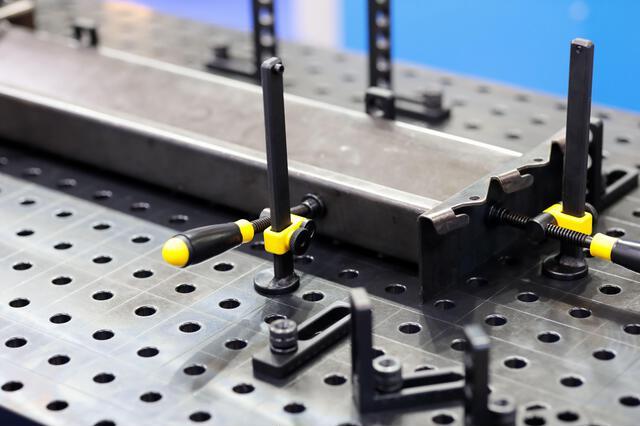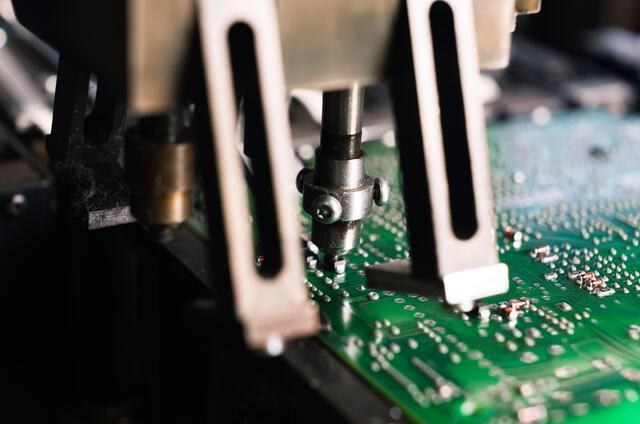Content Menu
● Introduction
● Understanding SMT Components
>> Differences between SMT and THT Components
● Key Types of SMT Components
>> Resistors
>> Capacitors
>> Inductors
>> Diodes
>> Transistors
>> Integrated Circuits (ICs)
● Advantages of Using SMT Components
>> Additional Benefits of SMT Components
● Challenges Associated with SMT Components
>> Mitigating Challenges
● Future Trends in SMT Technology
>> Miniaturization Trends
>> Enhanced Materials
>> Automation Advancements
>> Integration with IoT Devices
● Conclusion
● FAQ
>> 1. What are the main differences between SMT and THT components?
>> 2. Why are SMT components preferred in modern electronics?
>> 3. How do SMT components contribute to miniaturization?
>> 4. What are the challenges in using SMT components?
>> 5. How does the SMT process enhance production efficiency?
Introduction
Surface Mount Technology (SMT) components have become essential in modern electronics, transforming how devices are designed and manufactured. These components are characterized by their compact size and efficiency, allowing for increased functionality in smaller packages. Unlike traditional Through-Hole Technology (THT), where components are inserted into drilled holes on printed circuit boards (PCBs), SMT components are mounted directly onto the surface. This article will explore the key types of SMT components, their applications, advantages, and the impact they have on electronic design.

Understanding SMT Components
SMT components refer to a variety of electronic parts that are designed to be mounted directly onto the surface of PCBs. This contrasts with THT, where components require holes to be drilled into the PCB for insertion. The primary advantage of SMT is its ability to produce smaller, more compact electronic devices while facilitating automated assembly processes.
Differences between SMT and THT Components
The differences between SMT and THT components can be summarized as follows:
- Size: SMT components are generally smaller than their THT counterparts, allowing for more compact designs.
- Mounting Technique: SMT components are soldered directly onto the PCB surface, while THT components are inserted into holes.
- Production Efficiency: SMT allows for automated assembly, which increases production speed and reduces labor costs compared to manual assembly often required for THT.
Key Types of SMT Components
SMT encompasses a wide range of component types, each serving specific functions within electronic circuits. Here are the key types of SMT components:
Resistors
SMT resistors are crucial for controlling the flow of electric current in circuits. They help manage voltage and current levels to ensure proper device functionality. Typically small and rectangular, these resistors have numerical codes indicating their resistance values. Common applications include:
- Voltage division
- Current limiting
- Signal conditioning
Resistors can be categorized into different types based on their construction and material:
- Thin Film Resistors: Known for high precision and stability.
- Thick Film Resistors: More common in consumer electronics due to lower cost.
Capacitors
Capacitors are essential for storing and releasing electrical energy in circuits. They play a significant role in stabilizing voltage levels and filtering noise. SMT capacitors come in various types, including:
- Ceramic Capacitors: Widely used due to their stability and reliability.
- Tantalum Capacitors: Known for their high capacitance values in small sizes.
Applications include power supply decoupling and signal coupling. Capacitors can also be classified based on their dielectric materials:
- Polyester Capacitors: Used for general-purpose applications.
- Electrolytic Capacitors: Offer high capacitance but require proper polarity in circuits.
Inductors
Inductors store energy in a magnetic field when current flows through them. They are vital for filtering applications and energy storage. Commonly found in power supplies and analog circuits, inductors help stabilize current flow and reduce high-frequency noise. Types of inductors include:
- Wirewound Inductors: Made by winding wire around a magnetic core.
- Multilayer Inductors: Offer compact designs with high inductance values.
Inductors also play a critical role in radio frequency (RF) applications where they help filter out unwanted frequencies.
Diodes
Diodes allow current to flow in one direction only, providing essential protection and rectification within circuits. SMT diodes come in various forms, including standard rectifier diodes and Schottky diodes, which offer faster switching speeds. Applications include:
- Reverse polarity protection
- Signal demodulation
- Rectification in power supplies
Specialized diodes such as Zener diodes are used for voltage regulation, while light-emitting diodes (LEDs) serve both functional and aesthetic purposes in electronic devices.

Transistors
Transistors serve as amplifiers or switches for electronic signals. They are integral to modern electronics, enabling control over electronic signals and power management within circuits. Types of SMT transistors include:
- Bipolar Junction Transistors (BJTs): Used for amplification.
- Field Effect Transistors (FETs): Commonly used in switching applications.
Transistors can also be classified based on their configuration:
- NPN Transistors: Generally used for switching applications.
- PNP Transistors: Often employed in analog circuits.
Integrated Circuits (ICs)
ICs integrate multiple electronic functions into a single package, making them crucial for modern electronics. SMT ICs range from simple logic gates to complex microprocessors. Their applications span various domains, including:
- Microcontrollers
- Signal processing
- Power management
ICs can be further categorized into analog ICs, digital ICs, and mixed-signal ICs based on their functionality.
Advantages of Using SMT Components
The adoption of SMT components offers numerous advantages over traditional THT components:
- Miniaturization: The small size of SMT components enables the design of compact devices that occupy less space.
- Increased Functionality: More components can fit on a single PCB, enhancing device capabilities without increasing size.
- Cost Efficiency: Automated assembly processes reduce labor costs and increase production speed.
- Improved Performance: Shorter lead lengths associated with SMT components result in better electrical performance by minimizing parasitic effects.
Additional Benefits of SMT Components
Beyond the primary advantages mentioned above, there are several other benefits that make SMT components attractive for manufacturers:
- Thermal Management: The smaller footprint allows for better heat dissipation across the PCB surface.
- Design Flexibility: Designers have more freedom to arrange components without being constrained by hole placements.
- Reduced Electromagnetic Interference (EMI): The compact nature of SMT designs helps minimize EMI issues that can arise from larger component layouts.
Challenges Associated with SMT Components
While there are many advantages to using SMT components, there are also challenges that manufacturers must address:
- Handling Difficulties: Due to their small size, handling SMT components requires specialized tools and techniques during assembly.
- Placement Accuracy: Automated placement machines must be calibrated precisely to ensure accurate positioning on PCBs.
- Soldering Issues: The soldering process must be carefully controlled to avoid defects such as solder bridging or insufficient solder joints.
Mitigating Challenges
Manufacturers often implement various strategies to mitigate these challenges:
- Employing advanced pick-and-place machines equipped with vision systems to improve placement accuracy.
- Utilizing reflow ovens with precise temperature profiles to optimize soldering processes.
- Conducting thorough testing at different stages of production to identify potential issues early on.
Future Trends in SMT Technology
As technology continues to advance, several trends are emerging that will shape the future of SMT components:
Miniaturization Trends
The demand for smaller devices is driving innovation in component design. Manufacturers are developing even smaller SMT components without sacrificing performance or reliability.
Enhanced Materials
New materials such as advanced ceramics and polymers are being explored to improve component performance while reducing size and weight.
Automation Advancements
Automation will continue to play a crucial role in the production of SMT components. As robotics technology improves, manufacturers can expect increased efficiency and reduced costs.
Integration with IoT Devices
With the rise of the Internet of Things (IoT), there is a growing need for compact, efficient electronics that can communicate wirelessly. This trend will further drive innovation in SMT component design.
Conclusion
In summary, SMT components play a pivotal role in the electronics industry by enabling the design of smaller, more efficient devices with enhanced functionality. Their advantages over traditional THT components make them indispensable in modern electronic design and manufacturing processes. As technology continues to advance, the importance of understanding and utilizing these key types of SMT components will only grow. By addressing challenges associated with their use and embracing future trends, manufacturers can continue to innovate and meet the ever-evolving demands of consumers.

FAQ
1. What are the main differences between SMT and THT components?
SMT components are mounted directly onto the PCB surface, allowing for smaller designs, whereas THT components require drilled holes for insertion, providing stronger mechanical bonds.
2. Why are SMT components preferred in modern electronics?
SMT components support miniaturization, increase functionality by allowing more parts on a single board, and reduce production costs through automated assembly processes.
3. How do SMT components contribute to miniaturization?
Their smaller size enables closer placement on PCBs, facilitating more compact designs that enhance efficiency without sacrificing performance.
4. What are the challenges in using SMT components?
Challenges include handling difficulties due to their small size and the need for precise placement during assembly to ensure reliable connections.
5. How does the SMT process enhance production efficiency?
Automation in the SMT process speeds up assembly times, reduces labor costs, and ensures consistent quality across large-scale production runs.




















